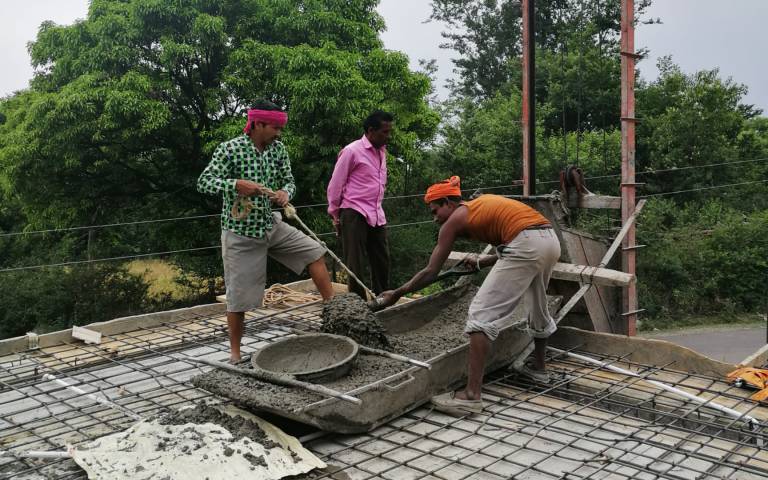 Research
Research

Subject
Cement in India: A Material(ist) History (Bombay, 1920s – 1990s)
First and second supervisors
Abstract
There was, in Bombay, “by the late 1920s, an efflorescence of enterprises in Bombay supplying RCC [sic]”. In 1936, 11 cement companies merged into the Associated Cement Companies Limited (headquartered in Bombay), affording it a virtual monopoly over cement production in India. Even so, a lot needed to be done to popularise the material, and to push it into the market; this was done through ACC’s technical-ideological arm, The Indian Concrete Journal, through exhibitions and catalogues, and through collaboration with the emerging class of architects (which had mutual benefits, of course).
Quite simply, it was not enough to revolutionise the means of architectural production; cement had to be pushed into the market, bought and used by people. It is this latter process which is of interest: the cement industry, and its allies - the architects, developers, and (for some time) the state - did so by affixing certain meanings to cement/concrete, in an attempt to "intentionally integrate its consumers from above". Some groups accepted these meanings, adding on to and modifying them, while others resisted (consciously or otherwise). In the use(s) of cement, therefore, there played out a fight not only for the meanings affixed to it, but for the “very meaning of the built environment”.
The project aims to study the processes that generate(d) these meanings: what are these processes, and where do they occur? Are they limited to propaganda arms (such as journals, magazines, etc.), or can they arise from the process(es) of construction (specifically, the division of labour on site)? Who is capable of producing such meanings? Why do some meanings become dominant, while others remain marginal?
These questions, I believe, can only be answered meaningfully when contextualised within the political economies of cement, of architectural production, and of production in general; this contextualisation, and the centrality of the means of architectural production (cement/concrete) constitute the ‘material(ist)’ aspect of my project. Taken together, I believe this study has the potential to add to Marxist/historical-materialist analyses of architecture and the urban, to make visible labour in architectural history, and to produce a totalising critique of all sectors, actors, forces, and processes moulding the built environment.
Biography
Adarsh holds degrees in architecture and sociology, and is interested - broadly speaking - in the application of social theory to architecture and the urban. His interest in the social grew out of his interest in housing and alternative architecture, and reading Marx, Engels, and Ambedkar marked his moment of departure from architectural practice. Thus far, he has presented papers at two international conferences - the first a review of approaches to housing, the second on the relationship between the individual and the city - and authored a dissertation on the architectural and urban history of Bombay between the 1860s and the 1930s.
Links
Image: Adarsh Lanka
 Close
Close

